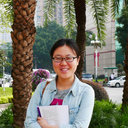Transcutaneous electrical acupoint stimulation (TEAS) relieved cancer-related fatigue in non-small cell lung cancer (NSCLC) patients after chemotherapy.
Raktažodžiai
Santrauka
BACKGROUND
To explore the effectiveness of transcutaneous electrical acupoint stimulation (TEAS) approach on cancer-related fatigue (CRF) in non-small cell lung cancer (NSCLC) chemotherapy patients.
METHODS
A total of 162 participants who treated with gemcitabine combined with platinum-based drugs (GP chemotherapy) were randomly assigned to three groups: Control (Group A, n=56), Sham TEAS (Group B, n=49), and TEAS (Group C, n=57). The following acupoints were used in this study: Qihai (CV6), Keshu (UB17), and Zusanli (ST36). The Revised Piper Fatigue Scale (RPFS) were used to measure CRF on the day before chemotherapy (P1), days 8 (P2) and 28 (P3) separately. The Differences among three groups were analyzed.
RESULTS
At the 28th day, the outcomes of the fatigue scores for Group C, Group B and Group A were 2.06±0.90, 2.80±1.34, 3.00±1.29 respectively. There were significantly different among three groups (F=9.784, P<0.01). At the 28th day, the outcomes of the affective fatigue (F=8.161, P<0.01), sensory fatigue (F=3.06, P=0.05) and cognitive fatigue (F=8.06, P<0.01) for Group C, Group B and Group A were significantly different among three groups.
CONCLUSIONS
Chemotherapy may increase the fatigue from P1 to P2 and P3 in NSCLC patients. And TEAS could help to relived CRF, especially at P3.


